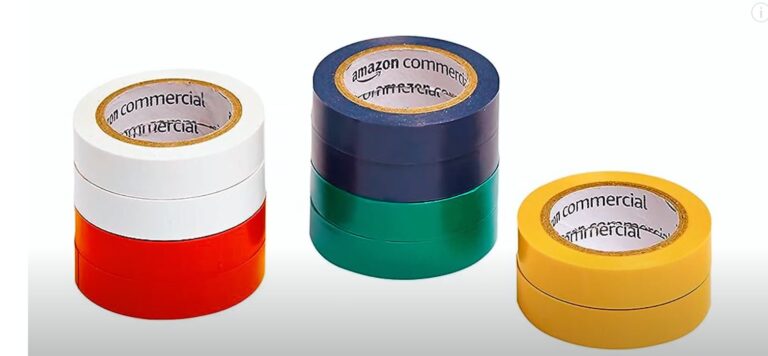How Much Does a Car Salesman Earn on a $30,000 Car Sale in a Year?
Purchase a car, one of the first people you interact with is a car salesman. Their job is to guide you through the buying process, answer questions, and ultimately help close the deal.
But have you ever wondered how much they make from a single sale? Specifically, how much does a car salesman earn on a $30,000 car?
The answer isn’t as straightforward as it seems because car salespeople’s income is typically based on commissions and incentives, rather than a fixed salary. Let’s break it down.
The Commission Structure
Most car salespeople earn their income through commissions, which are typically a percentage of the sale price of the vehicle.
The commission can vary significantly depending on the dealership, the model of the car, and the salesperson’s experience.
In general, a car salesman might earn anywhere from 20% to 30% of the dealership’s profit on a vehicle.
For instance, if a $30,000 car sells at a price that generates a $3,000 profit for the dealership, the salesperson might make around $600 to $900 from that sale, depending on their commission rate.
The actual profit margin of the car will depend on factors like dealer incentives, markups, and discounts applied during the sale.
Commission Percentage and Profit Margin
The dealership sets the commission structure, which can differ based on the salesperson’s seniority and the type of sale.
Some dealerships offer a sliding scale commission, where the percentage might be higher for sales that exceed a certain number of cars per month or for higher-end models.
The salesperson’s pay may also depend on whether they are selling new or used cars, as used cars often have higher profit margins.
Other Sources of Income for Salespeople
Apart from direct commissions, car salesmen often receive bonuses or incentives. These could be tied to the number of cars sold in a month, customer satisfaction scores, or even specific models that the dealership wants to push.
For example, a dealership might offer a $500 bonus if the salesperson sells a certain number of cars or reaches a specific sales target.
There may also be additional earnings from upsells, such as extended warranties, insurance packages, or financing deals, which could boost the salesperson’s take-home pay.
Average Income Expectations
While commission-based pay means that earnings can fluctuate, the average salary for a car salesman is usually between $40,000 and $60,000 annually, according to industry data.
In busy dealerships or for top-performing salespeople, earnings can go well beyond that, especially if they specialize in high-end or luxury vehicles.
For a $30,000 car sale, assuming an average profit of $3,000 and a 25% commission rate, a car salesman might make $750 from that particular sale. However, since most salespeople are selling multiple cars each month, their overall earnings can add up quickly.

Challenges and Variability
It’s important to note that car sales can be a volatile career. Some months may be lucrative, while others might see fewer sales, especially in markets where cars aren’t selling as quickly or during slower seasons.
Commissions are based on the dealership’s sales, so a dip in car purchases means less income for the salesman.
Additionally, factors like customer negotiation skills, vehicle pricing, and special promotions can all influence the final commission.
How Dealerships Structure Commission Plans
Dealerships may offer different commission structures to their salespeople, which can significantly impact how much a car salesman earns from a $30,000 car sale. The most common types of commission structures include:
-
Flat-Rate Commission: In this structure, the salesperson earns a fixed percentage of the sale price or a set amount per sale. For example, a flat commission might be 20% of the dealership’s profit on a sale, which makes it easier for salespeople to predict their earnings. However, the challenge with this structure is that it doesn’t necessarily reward higher sales volumes, and may be more favorable in low-margin situations.
-
Tiered Commission: A tiered system provides higher commission percentages for higher sales performance. For example, the salesperson might earn 15% on the first $100,000 in sales, 20% on the next $100,000, and 25% on sales above that threshold. This structure incentivizes salespeople to sell more to reach the higher tiers of commission.
-
Volume Bonuses: Some dealerships offer volume-based bonuses. These bonuses are awarded when a salesperson reaches a target number of sales, such as 10 cars in a month. This provides extra motivation for high performers to push for more sales. For a $30,000 car, hitting sales targets could mean significant bonus earnings for the salesperson.
Influence of Car Models and Brands
Another key factor in how much a car salesman makes on a $30,000 car is the specific car model being sold. Not all cars have the same profit margins. Luxury or high-performance vehicles generally yield higher commissions because they come with a larger markup compared to economy models. A $30,000 sports car may have a higher profit margin, which means the salesperson could earn a higher commission than they would on a $30,000 sedan or compact car with a smaller profit margin.
Salespeople may also earn more selling certain brands, especially if the dealership offers incentives for specific models or manufacturers. For example, car manufacturers sometimes offer promotional bonuses to dealerships or salespeople who sell a certain number of cars in a specific model range. These promotions can add a few hundred dollars—or more—to a salesperson’s paycheck for each qualifying car sold.
The Role of Financing in Car Sales
Financing plays a critical role in car sales. Many customers don’t pay the full price of a vehicle upfront, and instead, they opt for financing through the dealership. This gives car salespeople an additional opportunity to earn a commission. In many cases, salespeople receive a portion of the profit generated from financing deals, which could be anywhere from a few hundred to a few thousand dollars.
For example, if a customer chooses to finance a $30,000 car at a high-interest rate or chooses to purchase additional products like GAP insurance or an extended warranty, the dealership might earn more money from that transaction. Salespeople could earn a percentage of that additional profit as well, further increasing their total commission for the sale.
Understanding the Cost of the Sale
While it’s important to consider how much a salesperson can make on a $30,000 car, it’s also necessary to understand that not all of the car’s price is profit. The cost of the vehicle, dealership overhead, financing options, and inventory costs all factor into the final commission.
For instance, if the dealership receives a car at a price of $26,000 from the manufacturer and sells it for $30,000, the profit margin is $4,000. Depending on the dealership’s commission structure, the salesperson might earn a percentage of this $4,000usually after the dealership’s expenses are deducted. Salespeople don’t typically see the full retail price of the vehicle as their commission base.
Long-Term Relationships and Repeat Business
A car salesperson’s earnings can also be influenced by their ability to foster long-term relationships with customers. A loyal customer who returns for additional purchases or referrals can bring in extra income for the salesperson. Many dealerships encourage salespeople to build rapport with clients, as it can lead to repeat business, word-of-mouth referrals, and long-term commissions from repeat buyers or even family members and friends.
By providing great customer service, a car salesman may also earn referrals or recommendations for future business, boosting their earning potential. Additionally, satisfied customers are more likely to come back for trade-ins or maintenance, creating future opportunities for the salesperson to earn further commissions.
Challenges and the Reality of the Job
While the potential to earn a good income as a car salesman exists, it’s also important to acknowledge the challenges of the job. Salespeople work on a commission-only or commission-heavy structure, so their income can fluctuate based on the dealership’s sales performance, the number of customers visiting the dealership, and the overall economy.
-
Slow Seasons: Certain times of the year, like the winter months, may be slower for car sales, resulting in fewer commissions for salespeople. On the other hand, certain sales events, like end-of-year clearance sales, may bring in a surge of customers, allowing salespeople to sell more cars and earn more.
-
Customer Negotiation: Customers may attempt to negotiate a lower price, and salespeople may need to reduce their commission to close a deal. This means that while a $30,000 car might have a potential commission of $750, a heavily discounted sale could result in a lower commission.
-
Pressure and Targets: Salespeople are often under pressure to meet monthly quotas or sales targets, and failure to meet these targets may result in lower earnings. Some dealerships may even offer additional financial incentives for top performers, which adds another layer of competition to the job.
Conclusion
In conclusion, a car salesman can make anywhere from a few hundred dollars to a thousand or more from a $30,000 car, depending on the profit margin, commission rate, and bonuses. Salespeople who are able to sell more cars or work at dealerships with higher-end models may earn significantly more. However, this profession is not without its challenges, and earnings can vary based on numerous factors, including market conditions, individual sales performance, and dealership policies.






